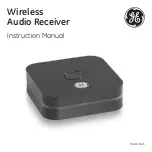
• In the United States, high-definition is always broadcast with digital signals.
Standard-definition is currently broadcast in both digital and analog. (However, high-
definition and digital standard-definition do not use the same digital signal.)
• Generally, all HD-ready monitors or integrated HDTV sets are capable of
supporting a standard-definition 480i or 480p signal. Not all HDTV monitors support
both 720p and 1080i high-definition signals. For instance, some plasma displays
support only 720p.
I have a wide-screen HDTV and am tuned to a channel that is listed as
an HD channel, but the picture is not displayed in a wide-screen format.
What’s wrong?
The program may not be an HD program. Not all stations broadcast HD programs.
Because non-HD programs do not use a wide format, the picture does not fill the width of
the screen. To fill the space, the digital receiver automatically places bars on the sides of
non-HD programs. You can change this display to one that removes the bars and fills the
screen with the picture.
I’m concerned about burn in. Can I remove the bars that display when
watching certain programs on my HDTV?
Yes. You can remove the bars and enlarge or stretch the picture to fill the screen. If
you have a standard-screen HDTV, you might try removing the bars by displaying the
program in a different picture format.
Burn in or “ghosting” occurs when an image is displayed on a TV for an extended
period of time. Through time, the image becomes permanently burned into the screen,
leaving a faint image of it on the screen. Some kinds of HDTVs are more susceptible
to burn in than others. For other ways to reduce burn in, refer to the user’s guide that
came with your HDTV.
34
CBS90064_SciAtl-Pgs 34
5/29/09 2:31:24 PM



































